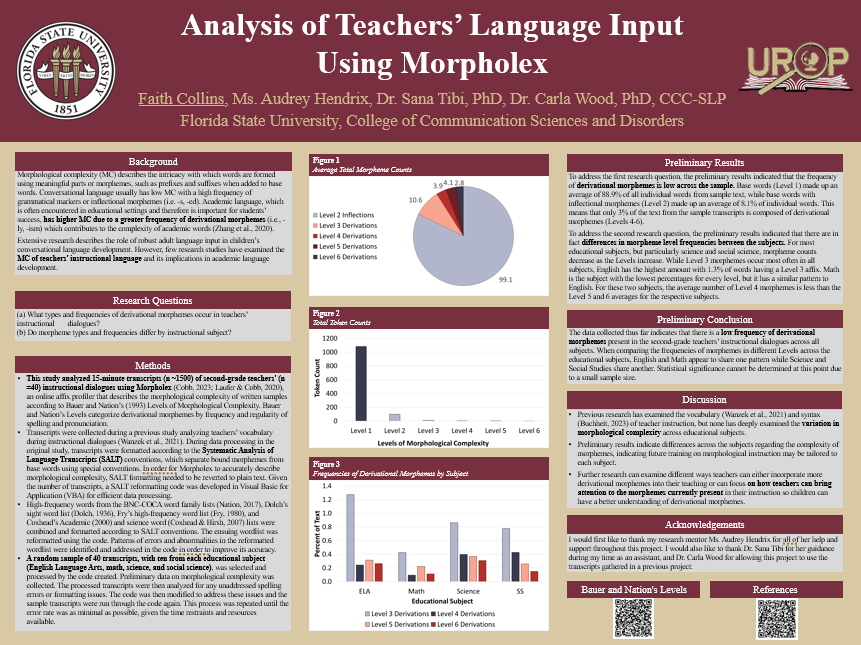Research Symposium
24th annual Undergraduate Research Symposium, April 3, 2024
Faith Collins Poster Session 5: 4:00 pm - 5:00 pm/35

BIO
My name is Faith Collins, and I am a first-year student from Melbourne, FL. I am currently studying Communication Science and Disorders and plan on going to graduate school to become a speech-language pathologist. I hope to have more research experiences prior to this adventure in order to explore possible career specializations, as there are so many opportunities in this field. In the future, I am interested in researching swallowing disorders and dysarthria, as well as the barriers to speech therapy services experienced by military families.
Analysis of Teachers’ Language Input Using Morpholex
Authors: Faith Collins, Ms. Audrey HendrixStudent Major: Communication Science and Disorders
Mentor: Ms. Audrey Hendrix
Mentor's Department: Communication Science and Disorders Mentor's College: College of Communication Science and Disorders Co-Presenters:
Abstract
Morphological complexity (MC) describes the intricacy with which words are formed using meaningful parts, or morphemes, such as prefixes and suffixes when added to base words. Conversational language usually has low MC with a high frequency of grammatical markers or inflectional morphemes (i.e. -s, -ed). Academic language, which is often encountered in educational settings and therefore is important for students’ success, has higher MC due to a greater frequency of derivational morphemes (i.e., -ly, -ism) which contributes to the complexity of academic words (Zhang et al., 2020). Extensive research describes the role of robust adult language input in children’s conversational language development. However, few research studies have examined the MC of teachers’ instructional language and its implications in academic language development. This study will investigate two research questions: (a) What types and frequencies of derivational morphemes occur in teachers’ instructional dialogues? and (b) Do morpheme types and frequencies differ by instructional subject?
This study analyzes 15-minute transcripts (n ~1500) of second-grade teachers’ (n =40) instructional dialogues using Morpholex (Cobb, 2023; Laufer & Cobb, 2020), an online affix profiler that interprets MC in written samples. MC will be described throughout the sample and compared across four instructional subjects (English, math, science, and social science).
Preliminary results suggest that inflectional morphemes have a high-frequency sample wide while certain types of derivational morphemes may occur more frequently in certain subjects. The findings may motivate further research on the effects of informing teachers about enriching their speech to promote academic language development in children.
Keywords: Morphology, Teacher Instruction, Speech Pathology


